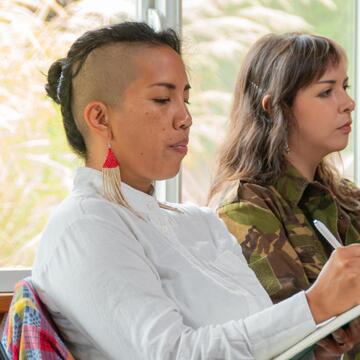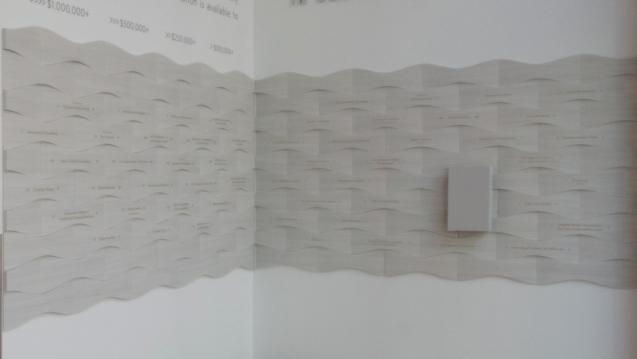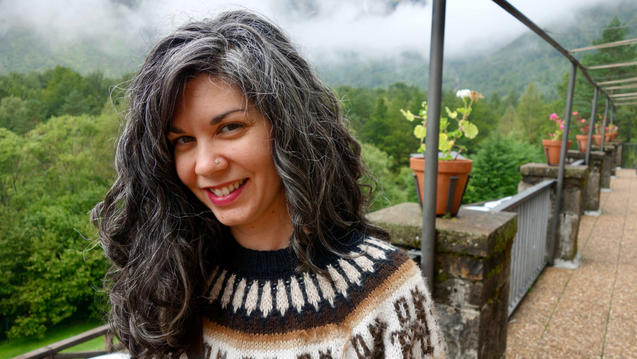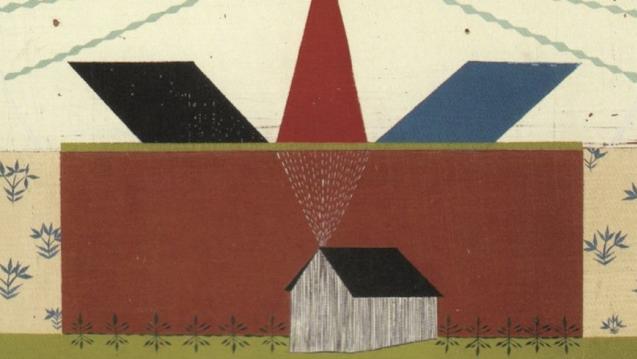
Great Gifts
A Retrospective with Arts at CIIS Curator Deirdre Visser
“When we were kids, my father was briefly a beekeeper,” reflects Deirdre Visser, curator of the Arts at CIIS. “I actually found it very frightening.” But with a keen concern for the greater good that guides so much of what she does, Visser defiantly learned to keep bees when she became an adult. Not everyone is willing to face a childhood fear, much less tend to it and ensure it thrives, but Visser, who is also a resident artist with Skywatchers and has a new book, Joinery, Joists and Gender, out this year in addition to her curatorship, has never shied away from a challenge.
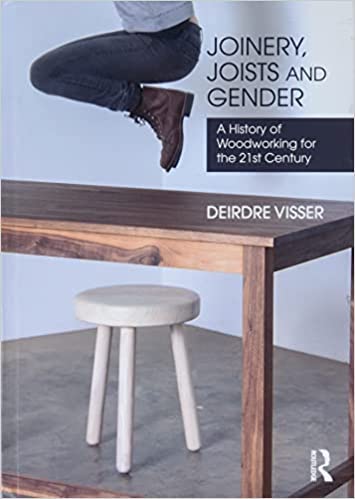
From a practical standpoint, it makes sense that Visser, who will be wrapping up 12 years as curator this fall, understands the care and keeping of bees. She understands perpetual motion: her hands are always moving, expressing a feeling or sketching a thought in the air, but her gaze is steady. She’s ready for whatever moment may present itself. Not necessarily to capture it—although as a photographer she’s learned to be ready with a lens—so much as to simply see where it will take her. “My favorite kind of conversation is the kind where you don’t know what the outcome will be,” she says, smiling at the prospect. Having overseen hundreds of exhibits in the Desai | Matta Gallery and beyond, she never seems to stop moving, buzzing between projects with tireless verve. “I get energy from the juggling, but I’m patient with the process,” she says, thinking back on the more than 150 exhibits she’s overseen. Shows have run the gamut from contemporary Himalayan artists to the legacy of the Black Panther Party, most of which she co-creates or otherwise develops in consultation with artists and experts. “Artists are experts in their own work, and it really is a dialogue,” she stresses.
Visser knows better than most. She works in the seemingly disparate mediums of photography, community art, woodworking, and now writing, though she’s quick to point out that art doesn’t belong in strict silos. “I’m an advocate for throwing the shop doors wide,” she says, eyes alight as we discuss a recent cross-disciplinary work she helped realize that required elaborate costume and object construction to realize a photographic vision. Throughout her career she’s also contributed to organizational development, grant writing, performance, documentation, and whatever else is needed not just to create art, but to get it in front of people. She cares as deeply about the audience as the artist, no matter how enduring or how fleeting the interaction between the two may be.
“A school is such an interesting place: students are here for two years or sometimes longer, but they may not consciously attend to all of [the art.] But I think of it as having a long conversation with the CIIS community.” Even if someone never pauses to admire a single piece, Visser wants the exhibits to reach the community on a subconscious level. “When we step in a learning environment we agree to be challenged,” she says. She wants to challenge the students of CIIS to encounter new ways of looking and doing, new ideas that will add complexity to their lives. She also wants to challenge herself. “Part of the gift of not being in a commercial space – of being in an educational setting—is that I could offer this gorgeous gallery for artists to try something they’d never tried. And certainly that was also an opportunity for me to try something that I’d never tried.”
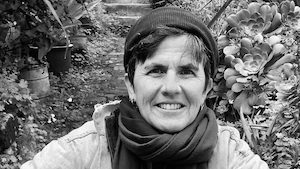
Visser’s boundless curiosity is undergirded by her lifelong commitment to context, history, and representation, principles she uses to guide her choices as an artist and a curator. She also embraces her training as a teacher rather than as an art historian, which gives her a unique and present-focused perspective. Having taught in K-12 schools and continuing education as well as at the college and graduate level, she’s committed to breaking down the siloing that occurs in education as well as the arts. “I don’t make the distinction between artist and scholar – it’s the same thing.”
Visser’s art and scholarship certainly intermingle. Her book, Joinery, Joists and Gender: A History of Woodworking for the 21st Century (Routledge, 2022) arose from a show she co-curated in 2019 called “Making a Seat at the Table: Women Transform Woodworking.” The exhibit featured 43 women makers who use wood as their medium. The exhibit was so fascinating to her that she embarked on a multi-year journey to chronicle the lives of female and gender-nonconforming woodworkers, and to quilt their individual stories over the long and neglected history of women’s participation in the craft. The book became a pandemic project, and Visser would often sit for hours or whole days writing and revising. The result is a meticulously researched volume that reads more like bestseller nonfiction than academic writing or a technical manual. “This is the first time I pursued writing as a practice,” she demurs, immediately shifting the conversation so that she can heap praise on her editor, Carla Williams, as an essential co-creator of the book. Even in writing a book, typically known as a solitary process, Visser finds a way to create community.
As for the CIIS community, Visser will leave The Arts at CIIS in the capable hands of Kija Lucas, who likewise has a deep artistic background – including two past shows at the Desai | Matta Gallery. The two are collaborating (no surprise) on three final exhibits united by a single theme, that of the city of San Francisco itself, albeit seen from very different perspectives. Visser herself shares some of those multifarious attitudes. “I’m from San Francisco, it is my home and it is not an uncomplicated city,” she says, thinking about remaining in place but absorbing new roles and responsibilities. “But I feel committed to creativity and community as practices of hope.”
Visser isn’t done with writing as a creative practice, and plans to develop her skills as an author. “I intentionally created uncertainty and risk, needing to propel myself into change,” she says of her next move. While she will still be teaching and maintaining her position at Skywatchers, she also plans to make time for more personal artistic endeavors. “I recognize that I get to choose this. It’s uncomfortable … and it’s exciting.” In looking to the future, Visser also takes time to reflect on her past. “I feel grateful for the opportunity to do everything I’ve been able to do. I’ve had an enormous amount of autonomy, creative freedom and support, and that’s a great gift.”
